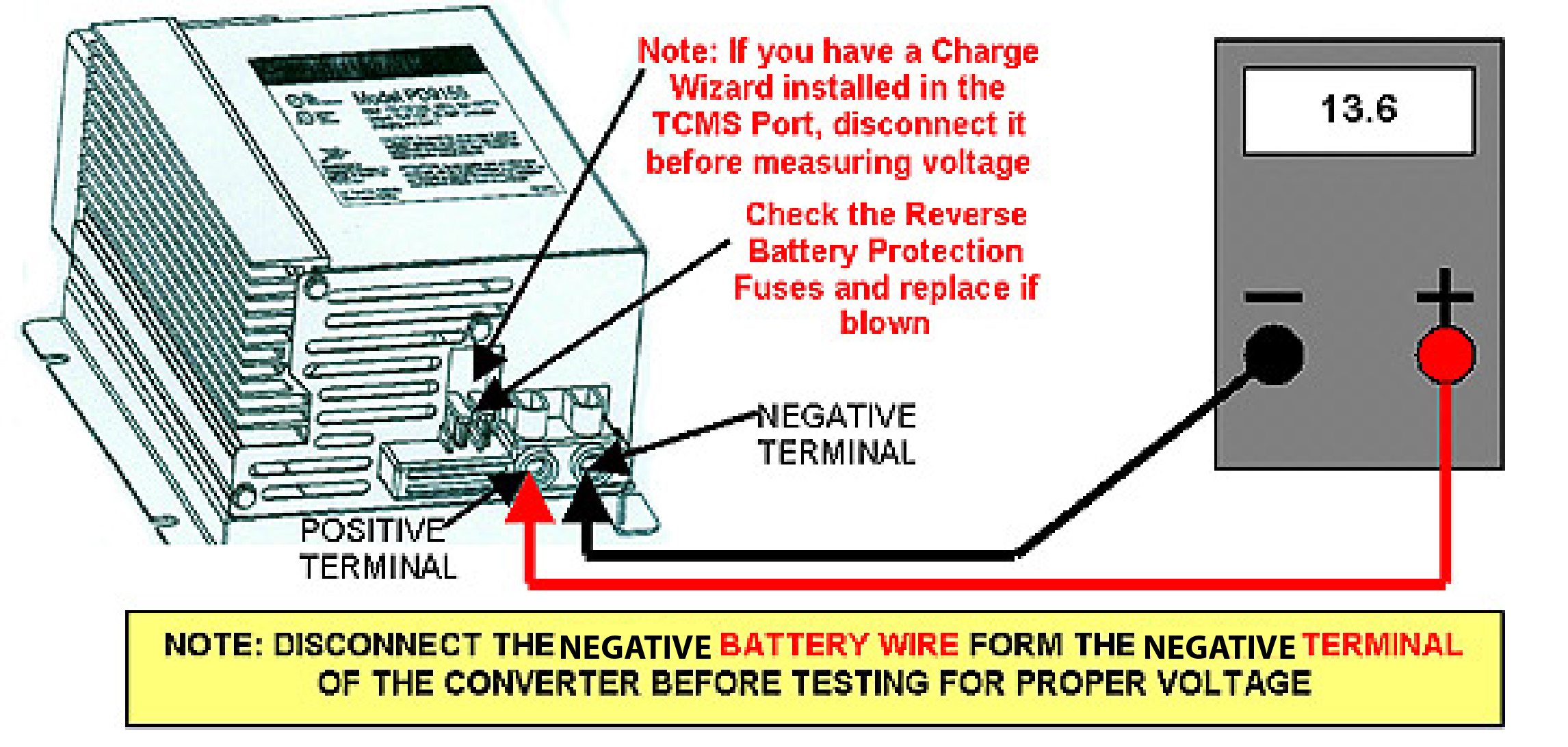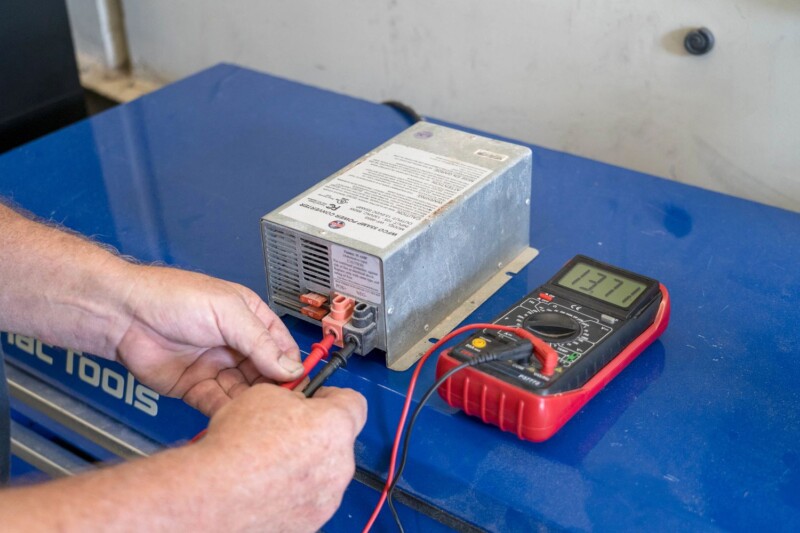Your power inverter might be bad if it fails to turn on or doesn’t supply power. You may also notice unusual noises or overheating.
A power inverter is crucial for converting DC to AC power, enabling the use of standard electrical devices. Knowing the signs of a bad inverter helps in timely replacements, ensuring uninterrupted power supply. Common indicators include the inverter not powering on, failure to supply power, unusual noises, or excessive heat generation.
Regular maintenance and quick troubleshooting can prevent significant issues. Faulty inverters can disrupt daily activities, especially in areas reliant on backup power. Understanding these signs ensures your devices remain functional and your power systems run smoothly. Being vigilant can save time, money, and prevent inconvenience.

Credit: www.progressivedyn.com
Signs Of A Faulty Power Inverter
Your power inverter should be quiet. If it makes strange sounds, there is a problem. Buzzing or humming noises are not normal. These noises may mean electrical issues. Always pay attention to new sounds. It could mean the inverter is failing.
Power inverters should stay cool. If it gets too hot, it is not good. Overheating can cause damage. Check for hot surfaces often. This can lead to a fire risk. Make sure the cooling fans work well. Overheating is a big sign of trouble.
Inconsistent Power Output
Fluctuating voltage is a common sign of a bad power inverter. Devices may not work properly or may turn off unexpectedly. Lights may flicker or dim. These voltage changes can damage sensitive electronics. Check your inverter if you see these signs. A good inverter should provide stable voltage.
Frequent power drops can indicate an inverter problem. Your devices might lose power often. This can disrupt your work or activities. It can also harm your devices over time. A bad inverter often causes these power drops. Ensure your inverter is working well to avoid this issue.
Device Malfunctions
Appliances may not work if your power inverter is bad. Lights might flicker or not turn on. Other electronics may fail to start. This can be frustrating and confusing.
First, check if the power source is connected. Inspect the wiring for any loose connections. Make sure the inverter’s fuse is not blown. If everything seems fine, the inverter could be the problem.
Some appliances may work intermittently. Devices might turn on and off randomly. This can point to an unstable inverter. Check if the inverter’s cooling fan is working. Overheating can cause intermittent issues.
Sometimes, the battery or power source may be weak. Ensure the inverter is getting enough power. If problems persist, the inverter may need repair or replacement.

Credit: blog.campingworld.com
Indicator Light Warnings
Blinking lights on your power inverter may signal a problem. Check the user manual for light patterns. Each pattern indicates a different issue. Some patterns could mean low battery or overload. Always troubleshoot based on the manual’s advice. Blinking lights should not be ignored, as they can prevent further damage.
Error codes can appear on the inverter’s display. These codes help identify specific problems. Refer to the manual to understand each code. Some common codes are E01 for battery issues and E02 for overheating. Clear the error codes by following the manual’s instructions. Regular maintenance can help avoid these errors.
Battery Problems
A power inverter may cause the battery to discharge quickly. This is a sign of a problem. The battery might not last long after charging. Keep an eye on battery levels. Frequent recharging is a red flag. Rapid discharge affects the battery’s lifespan.
A bad inverter can prevent the battery from charging. Plug the charger in. If the battery does not charge, there is an issue. Check the charging indicator. If it stays off, the inverter may be bad. A working inverter should allow the battery to charge smoothly.
Physical Damage
A failing power inverter may show signs like inconsistent power output or unusual noises. Check for physical damage, such as burnt components or loose connections, to diagnose issues.
Troubleshooting Steps
Inspect all power cables. Ensure they are tight and secure. Loose connections can cause issues. Check the battery terminals. Clean any corrosion found. Faulty cables can lead to inverter problems. Replace damaged cables immediately.
Use a multimeter to measure voltage. Set the multimeter to DC voltage. Check the input voltage from the battery. Ensure it matches the inverter’s rating. A low input can indicate a bad battery. Next, measure the output voltage. It should match the inverter’s output rating. If not, the inverter may be bad.

Credit: blog.campingworld.com
When To Seek Professional Help
Frequent failures in the power inverter signal a serious problem. Consistent buzzing sounds may mean internal faults. Overheating regularly can harm other parts. Flashing warning lights need urgent attention. Unusual smells could indicate burnt components. Persistent power drops should not be ignored. Repeated error codes suggest a deeper issue. Strange noises often mean mechanical problems. Flickering lights show unstable power. Battery not charging points to a malfunction.
Internal wiring issues are tricky to fix. Damaged circuit boards need expert handling. Burnt components require replacement. Faulty fuses can be a sign of bigger problems. Software glitches need specialized tools. Loose connections can cause intermittent failures. Broken switches should be inspected by professionals. Cooling fan failures can lead to overheating. Voltage regulation problems need precise adjustments. Capacitor issues are complex to diagnose.
Frequently Asked Questions
What Are The Symptoms Of A Bad Power Inverter?
A bad power inverter may cause flickering lights, unusual noises, or frequent tripping of circuits. You may also notice reduced power output or complete failure to power devices.
How Can I Test My Power Inverter?
To test your power inverter, use a multimeter to check voltage output. Ensure the inverter is properly connected and observe any irregularities in performance.
Why Does My Power Inverter Keep Shutting Off?
Your power inverter may shut off due to overheating, low battery voltage, or an internal fault. Check for adequate ventilation and battery health.
Can A Bad Power Inverter Damage My Appliances?
Yes, a bad power inverter can supply inconsistent voltage, potentially damaging your appliances. It’s crucial to address any inverter issues promptly.
Conclusion
Identifying a faulty power inverter is crucial for maintaining your electronics. Pay attention to signs like unusual noises and overheating. Regularly check for these issues to prevent damage. With proper maintenance, you can ensure your power inverter functions efficiently. Stay informed and proactive for a seamless experience with your power devices.

